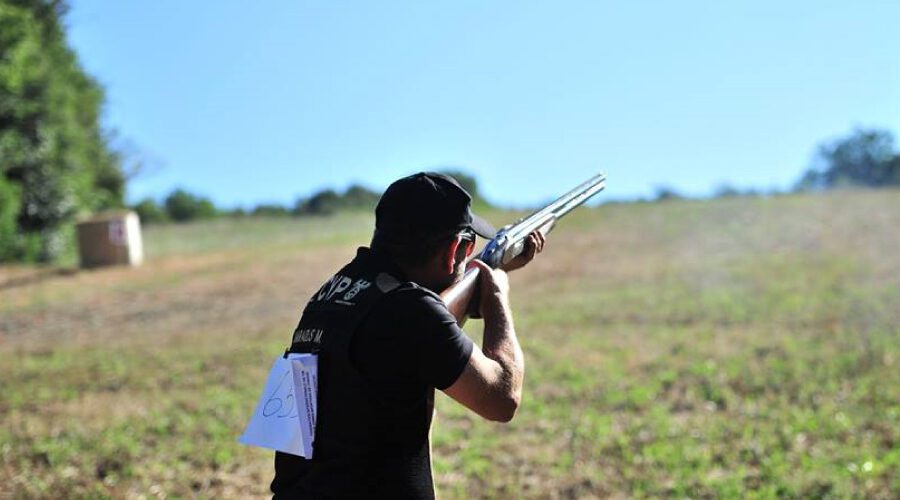Trap Shooting for Beginners: A Comprehensive Guide
Trap shooting is an exhilarating sport that combines precision, concentration, and skill. It challenges both the mind and body, making it a popular choice for recreational shooters and competitive athletes alike. If you’re a beginner looking to get started in trap shooting, this article will provide you with a comprehensive guide to help you understand the basics and develop the necessary techniques to excel in this exciting sport.
What is Trap Shooting?
Trap shooting is a form of clay target shooting where participants aim to break clay targets launched into the air from a designated location known as a “trap.” The trap throws targets away from the shooter at various angles, simulating the flight pattern of birds or game. The objective is to accurately shoot the clay targets mid-air using a shotgun.
USA School Trap Shooting League
Essential Equipment
Before diving into the techniques and skills required for trap shooting, let’s familiarize ourselves with the essential equipment you’ll need:
- Shotgun: A shotgun is the primary tool for trap shooting. The most commonly used gauge for trap shooting is the 12-gauge, but 20-gauge shotguns are also popular for beginners, as they offer less recoil.
- Ammunition: Shotgun shells, also known as ammunition or cartridges, are available in various loads and shot sizes. For trap shooting, target loads with a shot size ranging from 7.5 to 9 are typically used.
- Clay Targets: These saucer-shaped targets, also called “clay pigeons,” are made of clay and biodegradable materials. They come in different sizes and are specifically designed for shooting sports.
- Eye and Ear Protection: Safety is paramount in trap shooting, so invest in quality shooting glasses to protect your eyes from any flying debris. Ear protection, such as earmuffs or earplugs, is essential to shield your ears from the loud noise produced by shotguns.
- Shooting Vest or Pouch: A shooting vest or pouch provides convenience by allowing you to carry extra ammunition, accessories, and equipment comfortably.
Shooting Techniques
Mastering the following shooting techniques will significantly improve your accuracy and consistency in trap shooting:
Stance and Positioning
- Feet Placement: Stand with your feet shoulder-width apart and perpendicular to the shooting line. Distribute your weight evenly between both legs for stability.
- Shoulder Position: Mount the shotgun to your shoulder, ensuring a comfortable fit. The butt of the shotgun should rest against the pocket formed by your shoulder and chest.
- Cheek Weld: Rest your cheek firmly against the stock of the shotgun, aligning your dominant eye with the barrel.
Aiming and Target Acquisition
- Focus on the Target: Keep your eyes focused on the target as it launches from the trap house. Resist the temptation to look down at your shotgun barrel.
- Lead the Target: To hit a moving target, you need to lead it by aiming slightly ahead of its flight path. The amount of lead depends on the target’s speed and direction.
- Maintain Smooth Swing: Follow the target’s trajectory with the barrel of your shotgun while maintaining a smooth and fluid motion.
Trigger Control and Follow-Through
- Trigger Pull: Squeeze the trigger smoothly and steadily, avoiding jerky or abrupt movements. Maintain focus on the target as you pull the trigger.
- Follow-Through: After pulling the trigger, continue the swing and maintain your focus on the target. This helps ensure a smooth and consistent shot.
Practice and Safety Tips
To excel in trap shooting, regular practice and adherence to safety guidelines are crucial. Here are some additional tips to enhance your experience:
- Start with Basic Shots: Begin with single-target presentations to build your fundamental shooting skills. Gradually progress to more complex presentations as you gain confidence and proficiency.
- Join a Shooting Club: Consider joining a local shooting club or range where you can receive professional instruction, practice alongside experienced shooters, and participate in competitions.
- Safety First: Always prioritize safety. Familiarize yourself with the range rules, handle firearms responsibly, and follow all safety guidelines. Be aware of your surroundings and communicate effectively with fellow shooters.
- Analyze Your Shots: Review your shots and learn from each one. Identify patterns or mistakes to help improve your shooting technique and adjust accordingly.
- Mental Focus and Relaxation: Trap shooting requires concentration and mental clarity. Practice relaxation techniques such as controlled breathing to maintain focus during each shot.
- Stay Committed: Trap shooting can be challenging at first, but perseverance and dedication will yield results over time. Enjoy the process and remain committed to improving your skills.
Conclusion
Trap shooting is an exciting and rewarding sport that offers endless opportunities for skill development and personal growth. By understanding the fundamentals, practicing regularly, and maintaining a focus on safety, beginners can embark on a journey that combines precision, concentration, and enjoyment. So, grab your shotgun, head to the range, and experience the thrill of breaking clay targets in the captivating world of trap shooting. Happy shooting!


Recent Comments